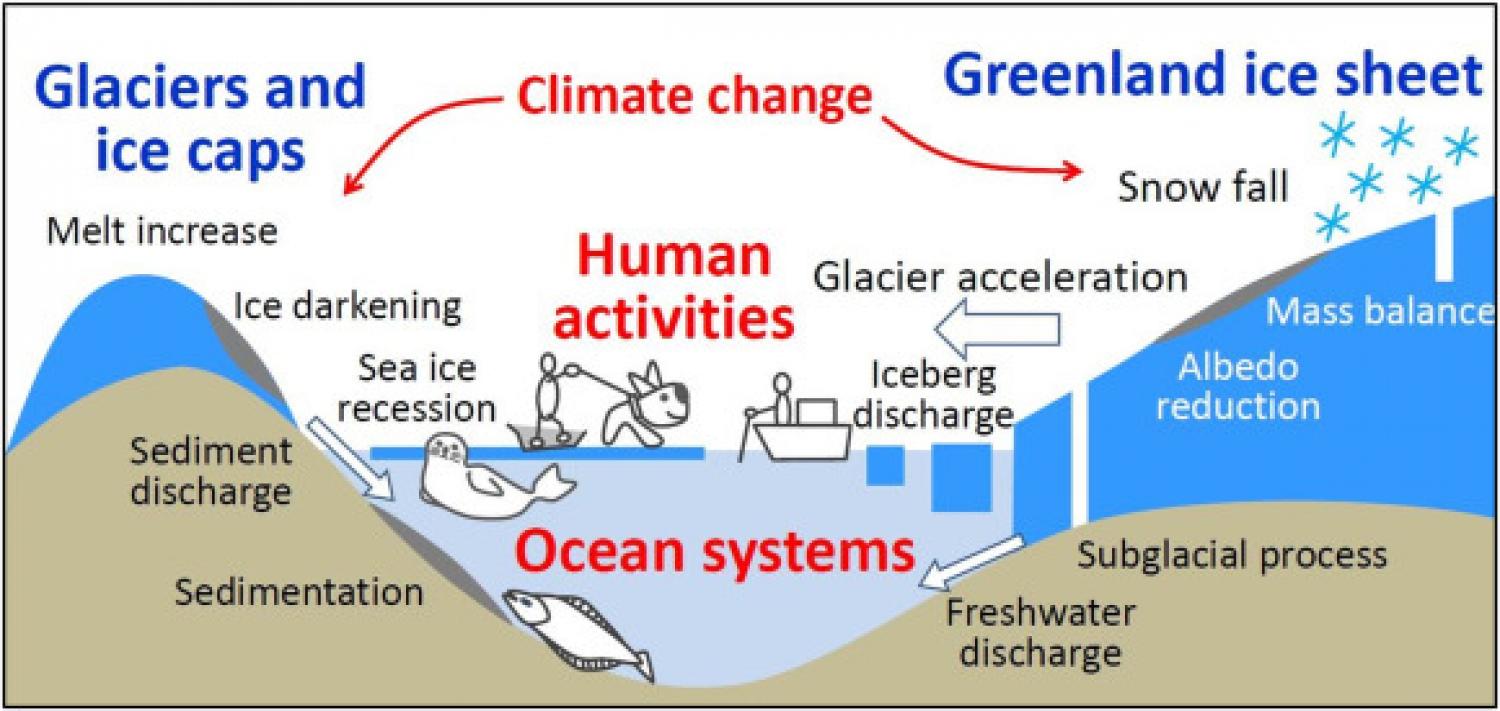
Elsevier, Polar Science, Volume 27, March 2021
Environments along the coast of Greenland are rapidly changing under the influence of a warming climate in the Arctic. To better understand the changes in the coastal environments, we performed researches in the Qaanaaq region in northwestern Greenland as a part of the ArCS (Arctic Challenge for Sustainability) Project. Mass loss of ice caps and marine-terminating outlet glaciers were quantified by field and satellite observations. Measurements and sampling in fjords revealed the important role of glacial meltwater discharge in marine ecosystems. Flooding of a glacial stream in Qaanaaq and landslides in a nearby settlement were investigated to identify the drivers of the incidents. Our study observed rapid changes in the coastal environments, and their critical impact on the society in Qaanaaq. We organized workshops with the residents to absorb local and indigenous knowledge, as well as to share the results and data obtained in the project. Continuous effort towards obtaining long-term observations requiring involvement of local communities is crucial to contribute to a sustainable future in Greenland.
